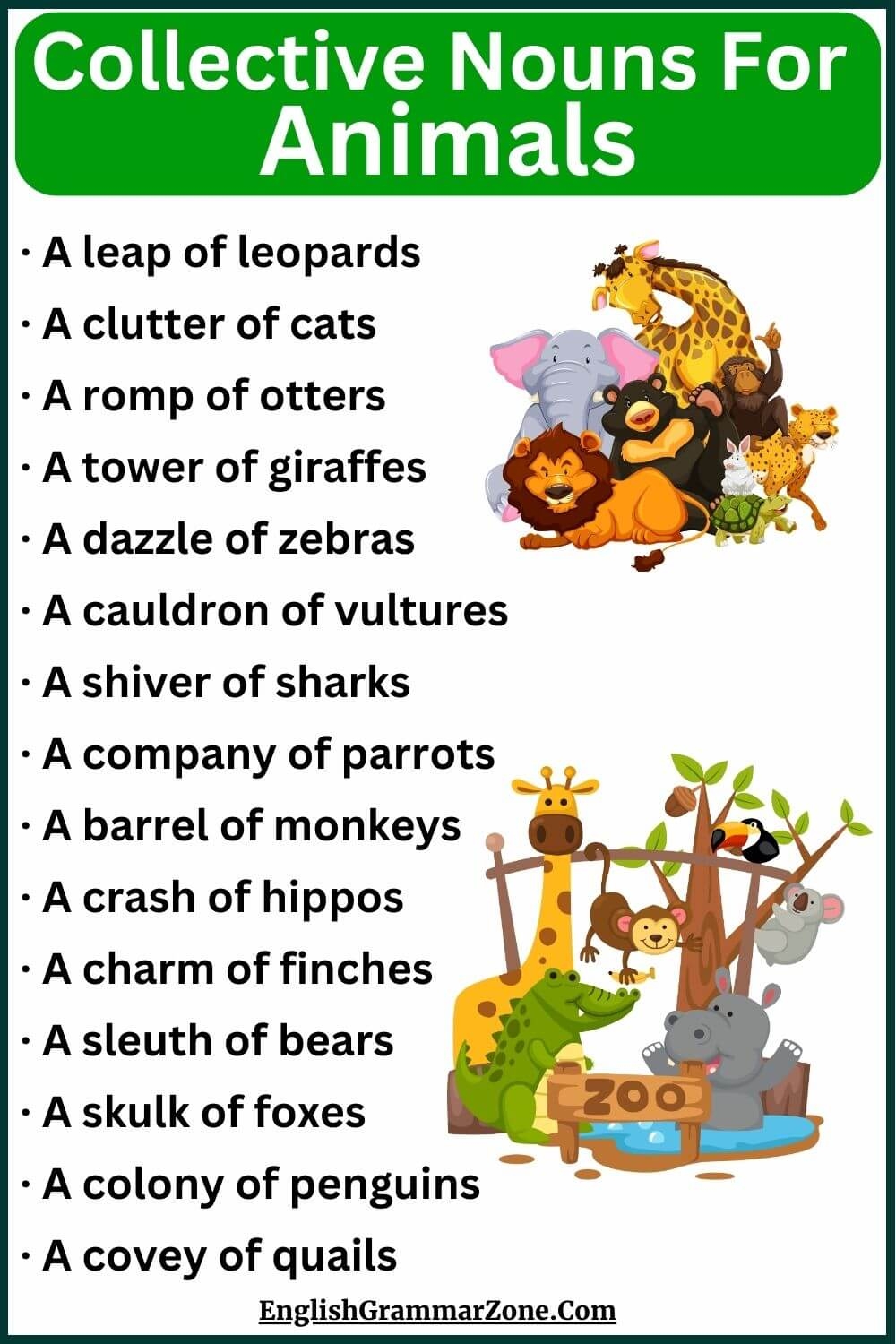When it comes to animals, there are some fascinating collective nouns that are used to describe groups of them. These terms can be quite unique and add an interesting twist to our language. From a murder of crows to a parliament of owls, these collective nouns bring a sense of whimsy and wonder to the animal kingdom.
Collective nouns are specific words used to describe groups of animals. They can vary depending on the type of animal and sometimes even the context in which they are used. These terms have been used for centuries and add a touch of poetry to our language when referring to groups of animals.
Common Collective Nouns for Groups of Animals
One of the most well-known collective nouns is a “herd,” which is used to describe a group of cattle, deer, or elephants. Another common one is a “pack,” which is often used for wolves or dogs. A “flock” is typically used for birds, such as geese or sheep. Other interesting collective nouns include a “murder” of crows, a “pride” of lions, and a “parliament” of owls.
Some collective nouns are more obscure and specific, such as a “skulk” of foxes, a “clowder” of cats, or a “crash” of rhinoceroses. These terms add a sense of fun and whimsy when describing groups of animals, allowing us to appreciate the richness and diversity of the animal kingdom.
Collective nouns can also vary depending on whether the animals are in motion or at rest. For example, a group of swimming ducks is called a “paddle,” while a group of resting crocodiles is called a “bask.” These distinctions add depth and nuance to our language, highlighting the behaviors and characteristics of different animals.
In conclusion, collective nouns for groups of animals are a fascinating aspect of language that adds color and flair to our descriptions of the natural world. From the majestic “pride” of lions to the playful “mischief” of rats, these terms capture the essence of each group of animals in a unique and poetic way. Next time you encounter a group of animals, consider using their collective noun to add an extra layer of interest and creativity to your conversation.
